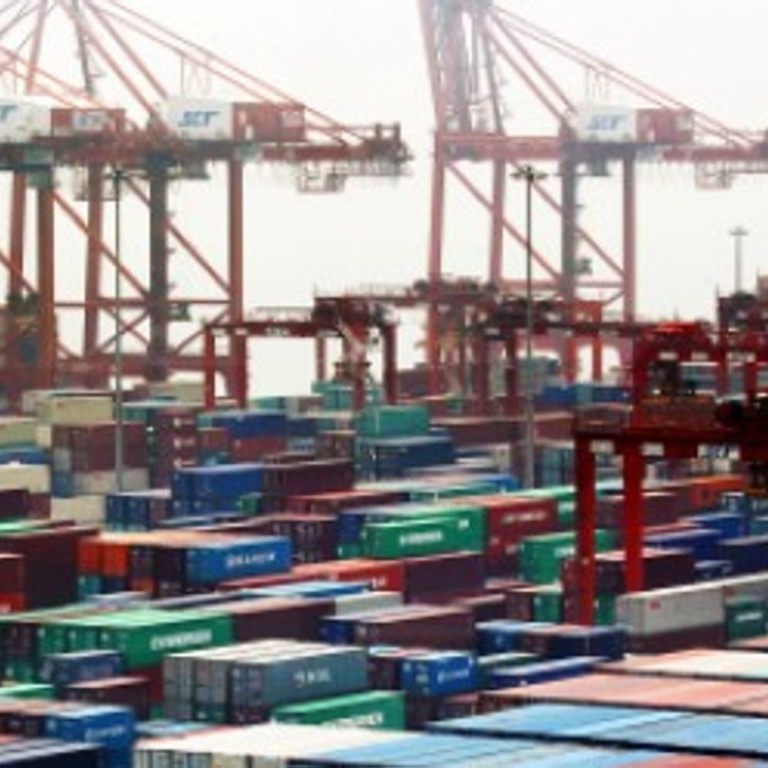
China off to shaky start in 2016 as exports and imports take a dive
Exports fall 11.2pc in January from a year earlier, while imports drop 18.8pc, customs data shows
Mainland trade is off to a slower start in 2016, with both exports and imports registering steeper-than-expected falls in January – indicating weak demand both at home and abroad.
Exports fell 11.2 per cent in January from a year earlier in US dollar terms – steeper than the 1.4 per cent drop recorded in December, the General Administration of Customs said on Monday.
Imports dropped by 18.8 per cent in dollar terms – accelerating from a decline of 7.6 per cent in December.
However, the mainland’s imports from Hong Kong reported a surge of 108.1 per cent in January, raising suspicion among analysts about over-invoicing activities to disguise possible capital outflow, especially amid hefty expectations of the yuan’s depreciation.
READ MORE: China’s export figures stronger than expected in December amid fears over nation’s slowing economy
“The trade data with Hong Kong is often distorted, but single-month data – especially around the Lunar New Year – is not robust enough and we’d better wait for February’s data as well as Hong Kong’s calibration of its purchase from – and shipment to – the mainland for a better judgment,” said Frank Tang, an economist with North Square Blue Oak, a London-based investment bank.
But the trade surplus climbed to a record high of US$63.3 billion in January, with the worse-than-expected drop in exports offset by the more disappointing imports figure.
“Together, we believe the downbeat trade results in January reflect the adverse global and domestic economic environment. We expect the situation to remain unchanged in the near future, and that external trade will again be a laggard to growth in 2016,” Mizuho Securities said in a research note.
Exports to the United States, the European Union and Japan continued to slow. Even worse, exports to emerging markets were also under challenge, as many faced downward pressure from the broader economy.
Data showed exports to Brazil dropped 44.3 per cent last month, shipments to South Africa fell 35 per cent, and exports to members of the Association of Southeast Asian Nations fell 18 per cent.
“Given the dimmer global economic outlook, China’s export growth is likely to remain constrained by lacklustre external demand,” said Bank of America Merrill Lynch.
READ MORE: China will find it tough to achieve over 6.5 per cent economic growth in next five years, says state adviser
“Meanwhile, low investment demand as overcapacity reduction progresses will weigh on import growth amid lower commodity prices.”
“We expect macro policies to remain supportive against counter-cyclical headwinds. That said, the wide trade surplus still leaves the central bank with limited room to conduct monetary easing through currency depreciation” as governor Zhou Xiaochuan ( 周小川 ) reckoned during an interview with Caixin magazine over the weekend, it said.
The weaker data raised calls for further loosening of monetary policy but its likely impact is uncertain given the low incentive for investment in the real economy.
Zhou said there was no basis for the yuan to continue to deprecate as China’s capital movements were within a reasonable range and international payments remained sound.

